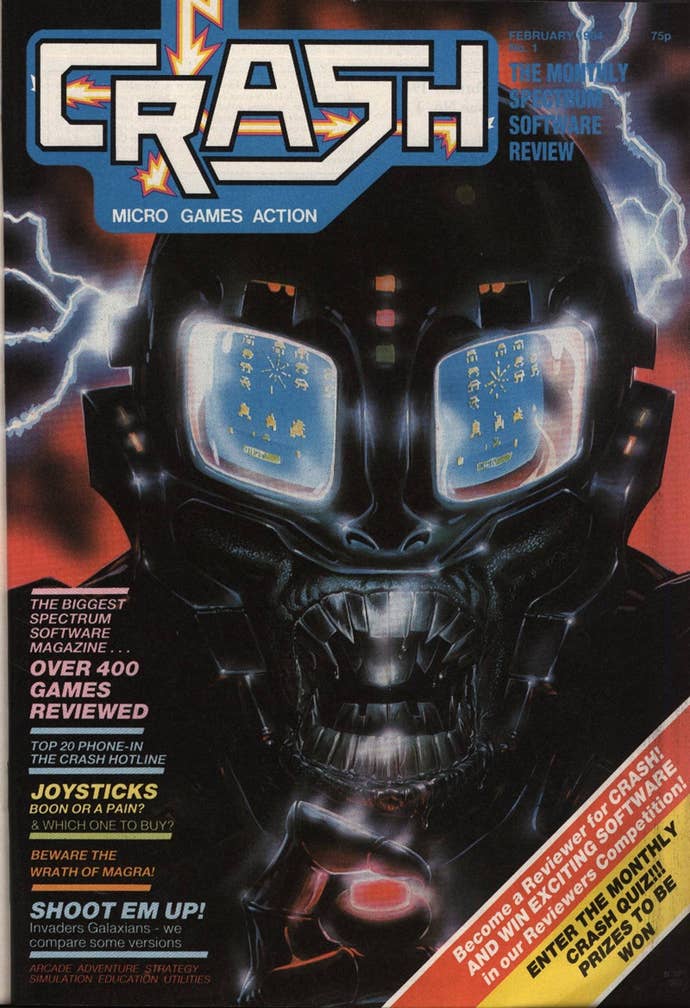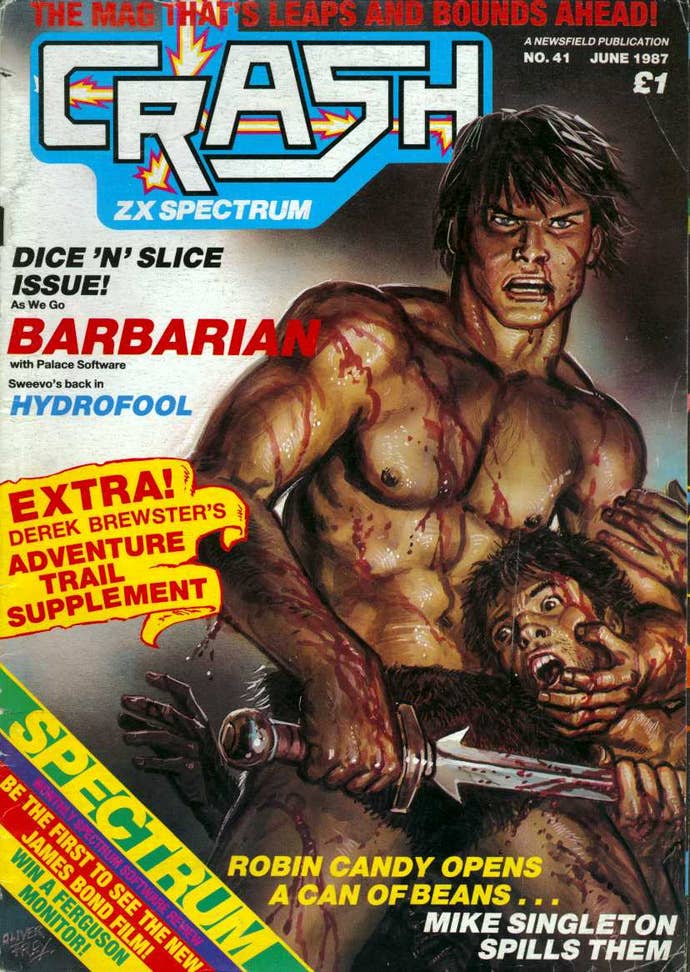Newsagents complained, readers were thrilled.
Other seminal titles, such asCommodore mag Zzap!64and the Amstrad specific Amtix, soon followed.
This was an era when players had virtually no access to information about new games prior to release.

No internet rumours, no social media leaks.
If it wasn’t covered in a magazine, it might as well not exist.
Often, these were literally photographs of the screen, reproduced on grainy paper.

Working out what a game actually looked like was a dark art.
This was also a time before press kits and media assets homogenised that information.
It’s gaming where Frey truly made his name though.

Sometimes they were Frey interpretations of big multimedia franchises, tying in with some blockbuster game.
But when no big name title was available, his covers could also be startlingly original and abstract.
One famous 1987 Crash cover depicted Fred Astaire and Ginger Rogers dancing on a keyboard.
Another had a surfer riding on a Spectrum through a pastel blue wave.
For Christmas 1985, he had Santa Claus giving a copy ofSpace Invadersto a gigantic green alien monster.
Joysticks were transformed into towering sci-fi citadels, ghoulish phantoms beamed adventure game parser from their glowing eyes.
His covers also flirted with controversy, as games became more bloodthirsty and gaming mags followed suit.
Newsagents complained, readers were thrilled.
But the impact of his art remained.
Marvel Comics legend Jack Kirby is one comparison.
Both had signature styles, instantly recognisable, that defined their genres.
It’s a testament to Frey’s commitment and talent that such comparisons even make sense.